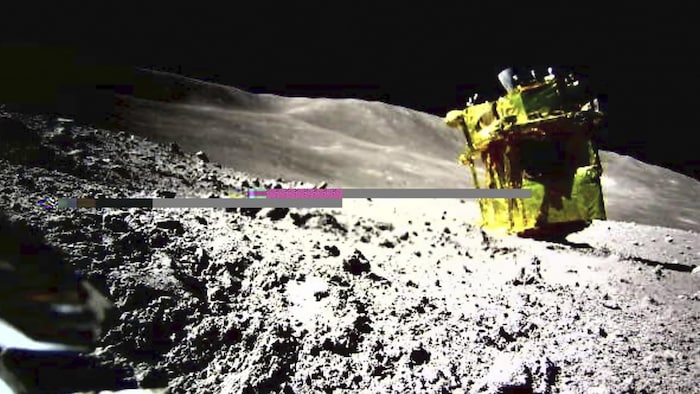Open in full screen mode The Japanese SLIM rover on the Moon. Image captured by one of the two cameras of Sora-Q, an ultracompact robot (8 cm and 250 g). Agence France-Presse The probe Japanese SLIM, placed on the Moon since the end of January, is activated again after surviving two weeks of rigorous lunar night, the Japanese space agency JAXA announced on Monday. Last night, a command was sent to SLIM and a response was received, confirming that the craft survived the lunar night and kept its communication capability!, JAXA enthusiastically declared on mid-lunar day and the temperature of communications equipment was very high, the agency said. Preparations are being made to resume operations when instrument temperatures have cooled sufficiently, JAXA added. The SLIM module (Smart Lander for Investigating Moon) successfully landed on the moon on January 20 55 m from its initial target, a very high degree of precision, making Japan the fifth country to successfully land on the natural satellite of the Earth after the United States, the USSR, China and India.
Mosaic image of the lunar surface captured by SLIM. The gray area to the right of the mosaic dataset is missing data due to the scanning operation being interrupted. a motor problem in the last tens of meters of its descent, SLIM had landed at an angle and its photovoltaic cells facing west did not receive sunlight.
SLIM landed in a small crater less than 1,000 feet in diameter, called Shioli. Before being turned off, the machine was able to disembark normally its two minirobots, supposed to carry out analyzes of rocks coming from the internal structure of the Moon (the lunar mantle), which is still very poorly understood.
Loading
While in Poland, Trudeau defends Canada's defense spending levels
ELSE ON NEWS: While in Poland, Trudeau defends Canada's defense spending levels
More than 50 years after its soil was first set foot by humans – the Americans in 1969 – the Moon is once again the subject of a global race.
The American Artemis program plans to send astronauts back to the Moon, a project recently postponed to September 2026, with in the longer term the construction of a permanent base on site. China has similar competing plans.
Japan's first two moon landing attempts went wrong. In 2022, a JAXA probe, Omotenashi, on board the American Artemis I mission, experienced a fatal battery failure shortly after its ejection into space.
And last year, a lander from the young private Japanese company iSpace crashed on the surface of the Moon, having missed the ;crucial step in smooth descent.
Last week, the United States returned to the Moon for the first time in more than 50 years , with the probe of a private American company, Intuitive Machines.
The company announced that its probe was probably lying on the side, but that scientific data and images should still be able to be recovered.
Reaching the Moon remains an immense technological challenge, even for the great space powers : another private American company, Astrobotic, also under contract with NASA, failed in early January to land its first machine on the Moon.

